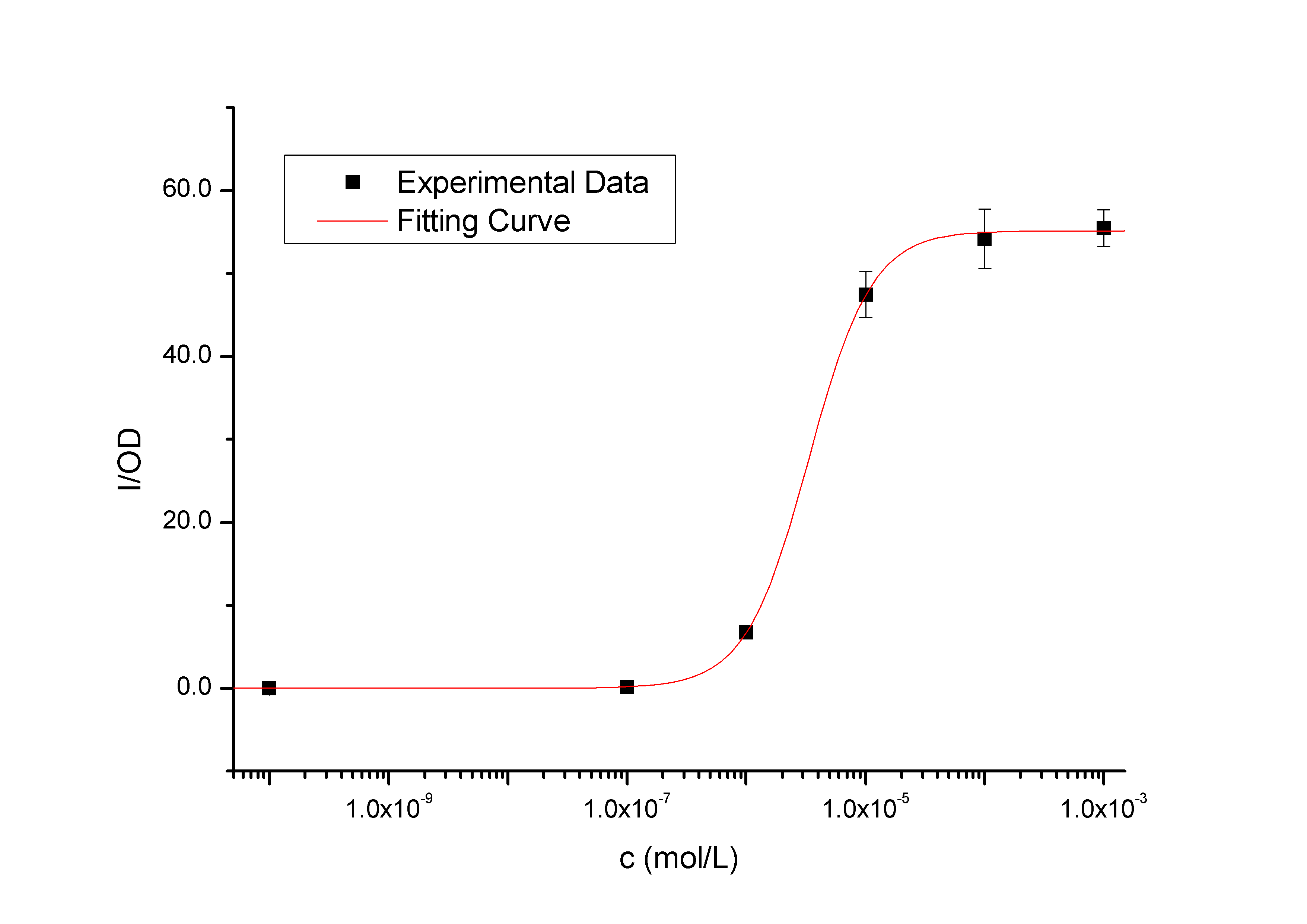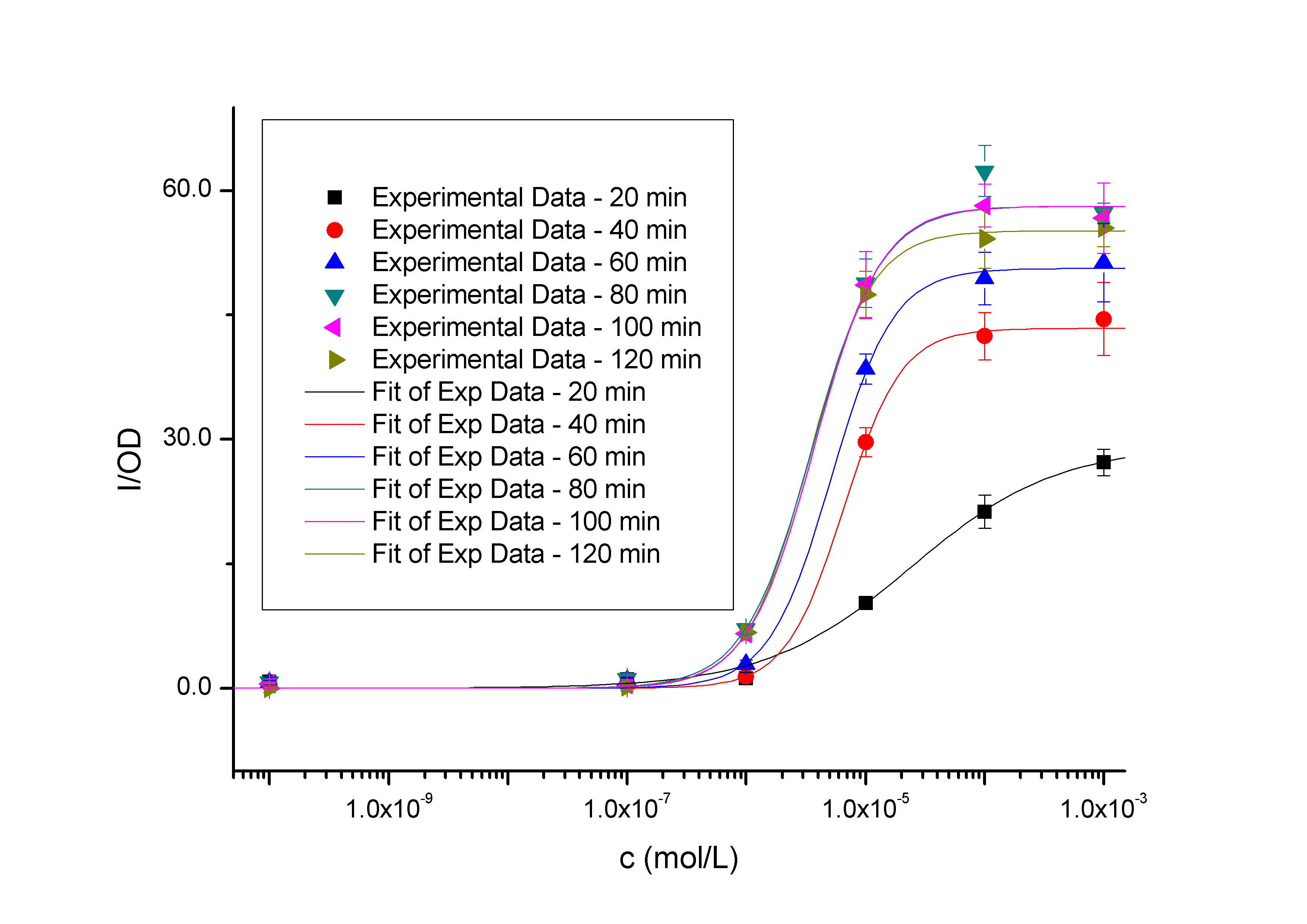Team:PKU Beijing/Parts Characterization/BBa K228004/Transfer
From 2009.igem.org
Spring zhq (Talk | contribs) (→Data) |
Spring zhq (Talk | contribs) (→BBa K228004 - NahR( reverse) - salicylate promoter) |
||
| (5 intermediate revisions not shown) | |||
| Line 10: | Line 10: | ||
''Output'': GFP fluorescence<br> | ''Output'': GFP fluorescence<br> | ||
| - | {|cellpadding=5 | + | {|cellpadding=5 style="background:gray" |
|[[Team:PKU_Beijing/Parts_Characterization/BBa_K228004| Part Main Page ]]||[[Team:PKU_Beijing/Parts_Characterization/BBa_K228004/Transfer| Transfer Function ]]||[[Team:PKU_Beijing/Parts_Characterization/BBa_K228004/Growth| Growth Rate ]] | |[[Team:PKU_Beijing/Parts_Characterization/BBa_K228004| Part Main Page ]]||[[Team:PKU_Beijing/Parts_Characterization/BBa_K228004/Transfer| Transfer Function ]]||[[Team:PKU_Beijing/Parts_Characterization/BBa_K228004/Growth| Growth Rate ]] | ||
|} | |} | ||
| Line 28: | Line 28: | ||
*'''Materials''' | *'''Materials''' | ||
| - | : | + | :A subset of inducer solution with a concentration gradient of 10^-7, 10^-5, 10^-3, 10^-2;<br> |
:Bacterial colonies;<br> | :Bacterial colonies;<br> | ||
| - | : | + | :Phosphate Buffered Solution (PBS). |
*'''Procedure''' | *'''Procedure''' | ||
1. One 40 ml culture of LB medium and antibiotic (Ampicillin, 100ng/ml) was inoculated with a single colony from a LB agar plate containing a [http://partsregistry.org/Part:BBa_K228850 BBa_K228850] (the constructed report system described in the above). <br> | 1. One 40 ml culture of LB medium and antibiotic (Ampicillin, 100ng/ml) was inoculated with a single colony from a LB agar plate containing a [http://partsregistry.org/Part:BBa_K228850 BBa_K228850] (the constructed report system described in the above). <br> | ||
| - | 2. Cultures were grown in 1.5 ml test tubes for several hrs at 37°C with shaking at 70 rpm to an OD600 of 0.530. This growth took on average 4 hrs. <br> | + | 2. Cultures were grown in 1.5 ml test tubes for several hrs at 37°C with shaking at 70 rpm to an OD600 value of 0.530. This growth took on average 4 hrs. <br> |
| - | 3. Add 1.5 mL of the fresh bacteria culture to 42 new test tubes. Then pipet an appropriate volume of salicylate solution into test tubes to yield 7 different final concentrations (0, 1.0*10^-10, 1.0*10^-7, 1.0*10^-6, 1.0*10^-5, 1.0*10^-4, 1.0*10^-3). Thus 6 replicates were measured for each concentration of salicylate. The concentration 0 group is to measure fluorescent background. <br> | + | 3. Add 1.5 mL of the fresh bacteria culture to 42 new test tubes. Then pipet an appropriate volume of salicylate solution into test tubes to yield 7 different final concentrations (0, 1.0*10^-10, 1.0*10^-7, 1.0*10^-6, 1.0*10^-5, 1.0*10^-4, 1.0*10^-3). Thus 6 replicates were measured for each concentration of salicylate. The concentration 0 group is to measure the fluorescent background. <br> |
4. Place the induction system at 37 degree. Every 20 minites, pipet 200 uL of the culture from each 1.5 ml test tube into a new 1.5 ml test tube, respectively, till the incubating time reaches 2 hrs.<br> | 4. Place the induction system at 37 degree. Every 20 minites, pipet 200 uL of the culture from each 1.5 ml test tube into a new 1.5 ml test tube, respectively, till the incubating time reaches 2 hrs.<br> | ||
5. Pellet bacteria cells by 1min centrifugation at 13000 rpm, and discard the supernatant as possible as we could. Resuspend the pelleted cells in 200ul of PBS. Time between repeated operations was about 20s.<br> | 5. Pellet bacteria cells by 1min centrifugation at 13000 rpm, and discard the supernatant as possible as we could. Resuspend the pelleted cells in 200ul of PBS. Time between repeated operations was about 20s.<br> | ||
6. Transfer 100 uL of bacteria l resuspention into each well of 96-well plate to test the GFP fluorescence by Microplate Reader. <br> | 6. Transfer 100 uL of bacteria l resuspention into each well of 96-well plate to test the GFP fluorescence by Microplate Reader. <br> | ||
7. Use spectrophotometer to test the OD600 value of the left 100 ul of bacteria resuspention. <br> | 7. Use spectrophotometer to test the OD600 value of the left 100 ul of bacteria resuspention. <br> | ||
| - | 8. We converted the OD600 value into the concentration of cells (/ml). The equation is OD600 1.0=5*10^8 cells/ml. Then we | + | 8. We converted the OD600 value into the concentration of cells (/ml). The equation is OD600 1.0=5*10^8 cells/ml. Then we normalized the GFP fluorescence by the OD600 values, to obtain the ratio of GFP fluorescence to the OD600 value. The mean for each concentration-time group was then averaged across 6 replicates to obtain a population mean. <br> |
| - | 9. The transfer function in Figure 1 is the 120 min time-slice from the time and dose dependent input-output surface. The data points represent the mean of 6 individual measurements. The corresponding error bars denote the 95% confidence interval in the mean of the independent measurements. <br> | + | 9. The transfer function in Figure 1 is the 120 min time-slice from the time and dose dependent input-output surface. The R^2 is 0.99999. The data points represent the mean of 6 individual measurements. The corresponding error bars denote the 95% confidence interval in the mean of the independent measurements. <br> |
| - | 10. In Figure 2, the level of induction triggered by the same concentration of inducer (of which concentrations are higher than 10^-7 mol/L, causing concentration of 10^-10 mol/L group has no significantly positive differences with the blank group) will be enhanced as the induction time extended, so it is the same with the saturation of fluorescence, as expected. <br> | + | 10. In Figure 2, the level of induction triggered by the same concentration of inducer (of which concentrations are higher than 10^-7 mol/L, causing concentration of 10^-10 mol/L group has no significantly positive differences with the blank group) will be enhanced as the induction time being extended, so it is the same with the saturation of fluorescence, as expected. <br> |
11. To estimate parameters that characterize the measured transfer functions, we used least squares estimation to fit a simple model to the data. Hill equations derived from simple biochemical equations describe the data well (Table 1). Pmax is the maximum output level, K is the switch point, and n is the hill coefficient describing the steepness of the transition from low output to high output. | 11. To estimate parameters that characterize the measured transfer functions, we used least squares estimation to fit a simple model to the data. Hill equations derived from simple biochemical equations describe the data well (Table 1). Pmax is the maximum output level, K is the switch point, and n is the hill coefficient describing the steepness of the transition from low output to high output. | ||
<html><A NAME="data2"> </a></html> | <html><A NAME="data2"> </a></html> | ||
Latest revision as of 14:46, 21 October 2009
|
||||||||||||||||||||||||||||||||||||||||
|
||||||||||||||||||||||||||||||||||||||||
 "
"


